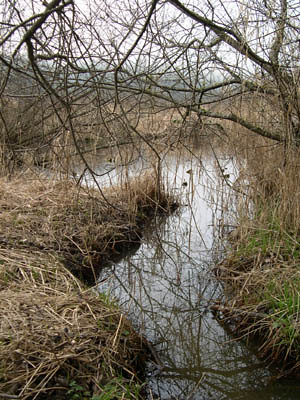Originally posted on my Environment & Spirituality blog:
Although it’s been several weeks now since I finished A Reenchanted World by James William Gibson, which I wrote about earlier, I did want to return to it before moving on to my other research.
In my previous post, I summarized the historical forces that helped develop or influence the culture of reenchantment. Gibson then describes some of the unintended consequences of this culture of enchantment. The increasing popularity and sense of connection to the environment and the land led to increased human interaction, which in turn led to environmental devastation and a diminishing of the sense of sacredness in those special places. Environmental degradation has come from tourism to places as diverse as National Parks and Caribbean resorts, from exurban development where homes are built in formerly wild land, and from outdoor motorized recreation (jet skis, snowmobiles, and off-road vehicles, which are terrible wasters of fuel and cause habitat destruction) and a related culture which views nature as “‘primeval chaos’” needing exploration (p. 153).

Further, an unintended consequence of the culture of enchantment’s aesthetic “favoring magnificent landscapes and large animals” is that it “inadvertently devalues and leaves vulnerable all that is smaller and plainer,” so that “efforts to save small, plain-looking creatures [is seen] as a giant waste, a ludicrous impediment to progress” (pp. 160-161). Of course, those plain creatures and landscapes are important ecosystems like wetlands and tall-grass prairie, or are important warning signs of greater environmental impact, like the spotted owl.
Additionally, “contradictions within the culture have weakened the movement” (p. 168). Contradictions cited include a debate over whether people and animals can live side-by-side, opinions on hunting, the business of zoos, animals theme parks, and black market trade in wild animals which call upon the culture of wildness but without actually letting animals remain wild, mariculture such as farmed fish, and the transformation of Native American culture by casinos and gambling.

On top of this, “the enchantment culture and environmental movement came under deliberate, organized attack from the Christian right, the Bush administration, and much of the business establishment” (p. 192). Under Bush, fossil fuels were prioritized, forest and wildlife areas were opened for extraction and road-building, environmental protections were gutted, and government staff and climate change scientists were discredited and silenced. The Christian right, with a focus on the Biblical message that God will destroy the Earth after the Rapture, do not see a need to save the environment. In fact, Gibson writes, they believe that “the Earth is Satan’s home, and all animals and plants are connected to his demons” (p. 201) and that “working for conservation is not only unnecessary but an affront to the infinite power of God” (p. 202). Reading this section, I was struck by the sheer numbers of the American public open to these religious arguments – “a third of adult Americans … considered themselves to be ‘born-again’” (p. 197). I was also heartened by the rise in the evangelical environmental movement, which is a large, growing, and different perspective on the evangelical view of the environment – seeing the need for stewardship and care, and calling for action from the evangelical population (p. 227).
Gibson closes the book on a high note, describing a renewed interest in the “less dramatic” creatures and landscapes and biodiversity, conservation and restoration successes, and “significant environmental victories” in the past few years (note: the book was written before Obama was elected, so these predate the change in administrations) (quote from p. 228 and p. 221 respectively). Gibson sees the culture of enchantment in as unlikely a place as the scientific UN Millennium Ecosystem Assessment, which calls for a restructuring of the economy in order to “‘recognize the true value of nature – both in terms of an economic sense and in the richness it provides in our lives in ways much more difficult to put numbers on’” (p. 246). (This report echoes many leading environmentalists, economists, and think tanks on the topic of environmental economics, an area I find exciting and interesting.)

The book ends with the following: “Despite periodic losses and setbacks, the momentum behind this cultural transformation continues to build, and it suggests that anyone who cares about the Earth should take heart… The spread of enchantment means that the environmental movement and its allies can now shift their strategy from defense to offense. Such an offensive strategy will require a strong proactive agenda for environmental reform… The reenchantment of nature – if coupled with political courage to act – offers a chance to remake the world” (pp. 251-252).
Gibson’s description of what the culture of enchantment is (see my previous post, third paragraph) is exactly what I want to explore in my inquiry. While Gibson did discuss spiritual and religious movements that are part of this culture – my specific area of focus – the book, and the culture he describes, turned out to be much broader than I originally imagined. There is value in this for me, as my focus on the spiritual (which comes out of a desire to look for the inspiration and meaning behind beliefs and action) could keep me out of the practical, which is very important too. So I found this book to be very good for setting the framework of the “culture of enchantment” and the environmental movement. However, following my original intent, the next pieces of literature I will talk about are focused more on the spiritual and religious.




